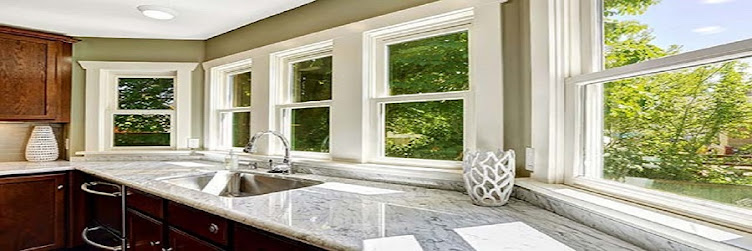Have you ever wondered what you could do to make your home safer? Picture this: you’re curled up on the couch watching a late-night thriller movie and the home invasion scene comes on. As the villain effortlessly breaks through the terrified homeowner’s window, you glance over at your living room window and suddenly you’re concerned about your own safety.
I know the feeling. I’ve been there, double-checking my locks and leaving a light on because I’m worried that someone might break-in. It felt like there was nothing I could do to make my house safer, but get this: I was wrong.
That’s right – there IS something that you can do to make your windows 4-5 times stronger. And you know what? All you need to do is choose a different type of glass – tempered glass.
Maybe you’re thinking that you have already taken other steps to secure your house. Great, but don’t stop reading just yet, because tempered glass does more than help keeps bad guys out. We will also be sharing how tempered glass can protect you and your family from accidental injury.
Want to find out more about this special glass and how it works? First off, let’s start by introducing the world of glass. Frankly, most of us don’t know all that much about glass and we just assume it is all created equal. But consider this: there are many types of glass and each is designed for a different purpose.
By now you’re probably wondering what type of glass is used in everyday windows and how to tell if your existing windows are regular glass or tempered glass. But before we go into how to identify the type of glass that you have, we need to learn about both kinds.

What Kind of Glass is Used in Windows and Doors?
Annealed Glass
The standard type of glass that you can expect to find in basic home windows is called annealed glass. Annealed glass is a softer glass that is cooled slowly during production to help it withstand temperature fluctuations.
Tempered Glass
A stronger type of glass which can also be found in homes and businesses is tempered or toughened glass. Tempered glass is a variety of safety glass which gains its strength from the rapid heating and cooling process that it goes through during production.
International building codes require that tempered glass be used in certain locations such as near showers, hot tubs, and stairs where the risk of someone falling into the glass is higher. When purchasing, expect the tempered glass to cost more than annealed glass.
What Makes Tempered Glass a Good Choice?
Tempered glass is a preferred window material choice for two reasons: durability and safety.
Durability
Want to see just how much abuse a tempered window can take? In side-by-side window pane tests, baseballs and golf balls simply bounced off a tempered glass window, but they shattered the annealed glass. Keep that in mind the next time you see a flock of neighborhood kids headed down the street to play baseball.
Safety
Fair warning: even a tempered glass window can be broken, but if it does break, it breaks much differently than annealed glass. This is where your family’s safety comes into play.
Annealed glass breaks into sharp shards that can get embedded in little feet and hands. If your elderly parent or your little child falls through an annealed glass window, they are going to end up with nasty cuts.
This is where the tempered glass fits in. When tempered glass breaks, it breaks into small, smoother and more rounded pieces than annealed glass. Your loved ones are much less likely to cut themselves on the smooth edges of broken tempered glass.
How to Tell if Glass is Tempered
So how do you tell if you already have tempered glass windows? It’s easier than you think. There are a few ways to find out if a window is tempered (and only one of them involves breaking the window).
You start by checking for an etched stamp in one of the window corners that say “Tempered” or “Temp.”
No stamp? Don’t stop yet because there is still a chance your window is tempered, and the stamp is simply hidden by the window frame.
Wait for a sunny day, then put on a pair of polarized sunglasses and look at the window in question. If it is tempered, you will see a series of dark, shadowy lines across the glass. These are leftover by the rollers that the window pane sat on during tempering.
The Bottom Line
To recap, the most common types of glass used in homes are annealed and tempered. Tempered glass is specially treated to be stronger and safer than annealed glass, so it is used in more high-risk locations where it is mandated by building code. Expect tempered glass to break less easily and if it does break, to be less sharp and dangerous than annealed glass.
Now go take a look at your current windows and see if they are tempered. If not, give us a call and we will walk you through how to make your home safer with tempered glass.
from
https://chicagowindowguy.com/home-tips/why-you-should-use-tempered-glass-in-your-home/




